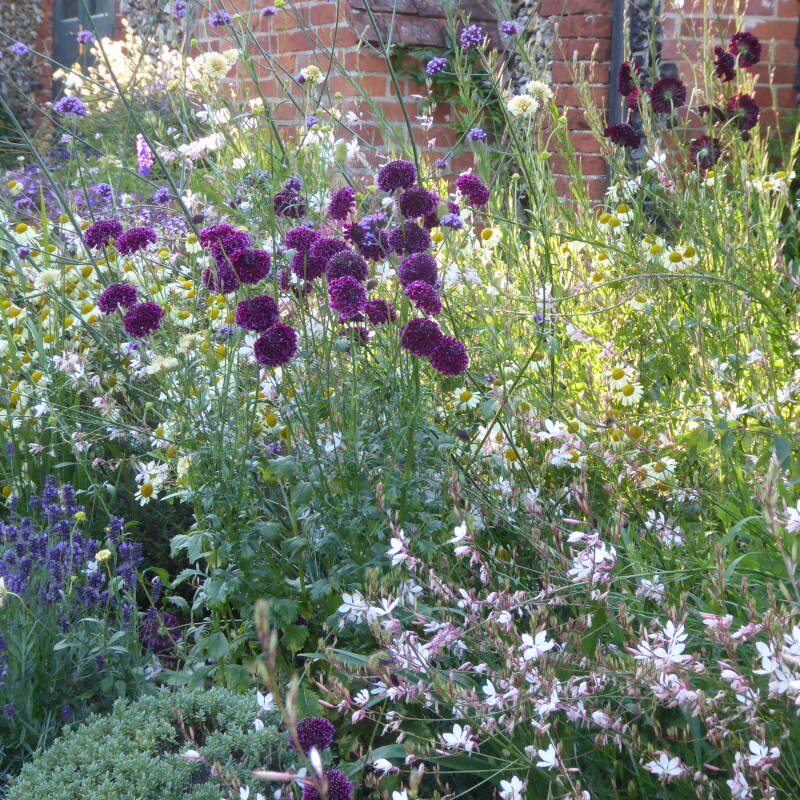White Ash, Fraxinus americana: “Biltmore Ash”
If you are a sports-loving person, you have no doubt enjoyed the bounty of the American ash tree which for generations has provided the raw material for ubiquitous sports equipment such as baseball bats, particularly the famous “Louisville Slugger,” as well as tennis racquets, bowling alley floors, hockey sticks, snowshoes, and even the oars and keels of small boats. The wood of Fraxinus americana is hard, resilient, and especially important for those bats, racquets, and sticks, extraordinarily able to absorb shock. Outdoor furniture as well as the handles of gardening tools are also frequently made of this heavy, narrow grained wood.
For the home gardener a white ash tree, which in maturity has a rounded shape and typically reaches 60 to 80 feet in both height and width, can be an attractive source of shade that provides distinctive seasonal interest.
Is white ash the right tree to plant in your landscape? Read on for everything you need to know:

Bright green purple-tinged flowers (male and female grow on separate trees) appear in the spring with winged seeds showing up in the fall to provide food for a variety of birds including wood ducks, finches, cardinals, grouse, and grosbeaks.

White ash trees are prized for their dramatic display of fall color which turns from a brilliant gold to a purplish maroon.
White ash is commonly found in the forests of eastern North America, the largest of 16 native ash species recognized by the U.S. Department of Agriculture Forest Service. Although Fraxinus americans is a sun lover, it has developed the clever survival trick of tolerating shade when it is young so it can survive in the understory of the woods until it grows taller than its neighbors and can get unobstructed sunlight.

Cheat Sheet
- If you have the space, use white ash as a shade or specimen tree, but be aware that it is susceptible to a particularly virulent pest (see below).
- White ash generally tolerates urban conditions and can be used successfully as a street tree.
- The flowers, which appear in April and May, are attractive to many species of butterflies.
Keep It Alive
- Fraxinus americana is hardy in USDA zones 3 to 9.
- Plant a white ash tree in full sun in moist, organically rich soil.
- Although white ash is somewhat tolerant of temporary flooding, it prefers good drainage
If you are considering an ash tree for your property, it would be wise to first consult a tree expert for information on the emerald ash borer (EAB), an iridescent half-inch-long Asian beetle that is devastating ash trees all over the United States. According to Kathleen Knight of the USDA Forest Service (who spoke at a recent EAB seminar hosted by the New York Botanical Garden), the borer was discovered in Michigan near Detroit in 2002. Since that time, she says, it has killed millions of trees and will most probably kill millions more.
The adult beetle, which probably traveled here on planes and cargo ships in commercial packing material, does only minimal damage by chewing on ash foliage. The larva of this insect resembles a segmented worm and infests the tree beneath the bark, feeding on the inner bark or “phloem,” which is the avenue through which nutrients travel from the leaves to the rest of the tree. The larva destroy the phloem, effectively cutting off the tree’s food supply and starving it to death.

At this time there is no effective prevention or cure for an EAB infestation. If you have an existing ash tree on your property, some recently developed insecticide treatments can arrest EAB damage if it is not too severe when it is discovered. The USDA Forest Service has compiled information about how to identify the borer and treatments for affected trees. Chemical therapy must be timed and applied correctly to be effective. It is highly recommended that you consult a professional arborist or other horticulture expert for help.
For more growing tips, see Ash Trees: A Field Guide to Planting, Care & Design in our curated guides to Trees 101. For more of our favorite landscape trees, see:
- Trees: A Field Guide to Planting, Care & Design.
- 5 Favorites: Wind-Resistant Trees.
- Birch Trees: A Field Guide.
- Gardening 101: Japanese Maple Trees Planting, Care & Design.








Have a Question or Comment About This Post?
Join the conversation